Why more educational institutions are going Green
Classes are officially in session for the new school year, and students and faculty are off to a bright start…with energy efficiency that is!
Investing in energy efficiency has become the newest trend for educational institutions across the country with hopes of reducing utility costs, creating healthier learning environments for students, and promoting positive community outcomes through sustainability.
The Center for Green Schools at the U.S. Green Building Council outlines the three pillars where green schools can strive for success:
- Reduce environmental impacts and costs,
- Improve occupants health and performance, and
- Increase sustainability literacy
According to the Center for Green Schools, “Successful green schools are better for students, teachers, and communities.” The organization has also launched the Green Apple Day of Service, where nearly a million volunteers get to celebrate the central role that schools play in preparing the youth around the world to be sustainability leaders for years to come. Read more about the organization and find case studies on their website.
Applying simple energy-saving techniques in the classroom goes a long way, and the light bulb has officially gone on for institutions to take heed in the movement toward power saving .
The Importance of Energy Efficiency in Schools
According to the Alliance to Save Energy (ASE), “energy efficiency campuses use more than 20% less energy than other campuses.”
Whether a campus is switching from incandescent light bulbs to LEDs, replacing old HVAC systems, or installing a cool roof, more and more green schools are taking advantage of what energy efficiency has to offer.
According to the EPA, “by implementing energy efficiency measures, many K-12 schools have been able to reduce energy costs by as much as 30 percent in existing facilities (U.S. EPA, 2004b). Modification of a pre-existing building for energy efficiency (a process known as retrocommissioning), can save a typical 100,000-square-foot school building between $10,000 and $16,000 annually.”
Read more stats and ways to start your own project in the EPA’s “Energy Efficiency Programs in K-12 Schools Guide” right here.
The Community Impact
The greening of schools isn’t just about reducing utility costs and energy usage, however. A large part of this movement is focused on educating the next generation about environmental stewardship and improving the learning environment overall. Check out the Center for Green Schools blog to see how green schools are better for learning, for teaching, and for communities, as well as myths and facts about green schools.
How Pathway Lending is helping schools go green
Since 2010, Pathway Lending has operated an Energy Efficiency Loan program to put significant, long-term savings within reach for commercial, industrial, and nonprofit businesses and governmental entities. With help from our energy efficiency vendors, we’ve been working with more schools than ever before.
From Grizzlies Prep in Memphis to Crown College in Powell, Tennessee, we’re working with private and public schools at every level of education to go green.
Here are two examples of schools that have used our Energy Efficiency Loan Program to fund projects on campus:
Christ Presbyterian Academy
In the spring of 2017, Christ Presbyterian Academy in Nashville received a loan from Pathway Lending to replace more than 4,000 bulbs across their campus.
The preschool through 12th grade school installed Energy Focus lights in classrooms and LED exterior lights throughout the parking areas. The school saving on maintenance costs because of the longer lasting fixtures, and they’re predicting utility cost savings of more than $60,000 a year – just from changing the way they light the school.
Crown College
In East Tennessee, the privately-owned, nonprofit Crown College used their loan from Pathway Lending to improve the energy efficiency of their more than 40 year old former manufacturing facility.
They replaced interior and exterior lights, installed water conservation measures, upgraded their HVAC, and elevated the building’s control systems. All told, the majority of their 200,000 square foot facility has been thoroughly upgraded to keep students and faculty comfortable while generating long-term reductions in utility costs.
Green schools are popping up everywhere with more consumers gaining interest in its environmental, economical, and health benefits. Investing in energy efficiency is the first step in creating long-term, significant reductions in energy, emissions, and utility consumption in schools and other businesses alike.
Ready to work with Pathway Lending on an Energy Efficiency Project?
Pathway Lending operates a low-interest, revolving loan fund to finance energy efficiency and renewable energy projects in Tennessee. To date, we have funded more than 200 projects throughout the state.
We offer up to 100% financing for projects ranging from $20,000 to $5 million on energy projects like lighting, solar, HVAC Replacements, cool roofs, and air compressors.


